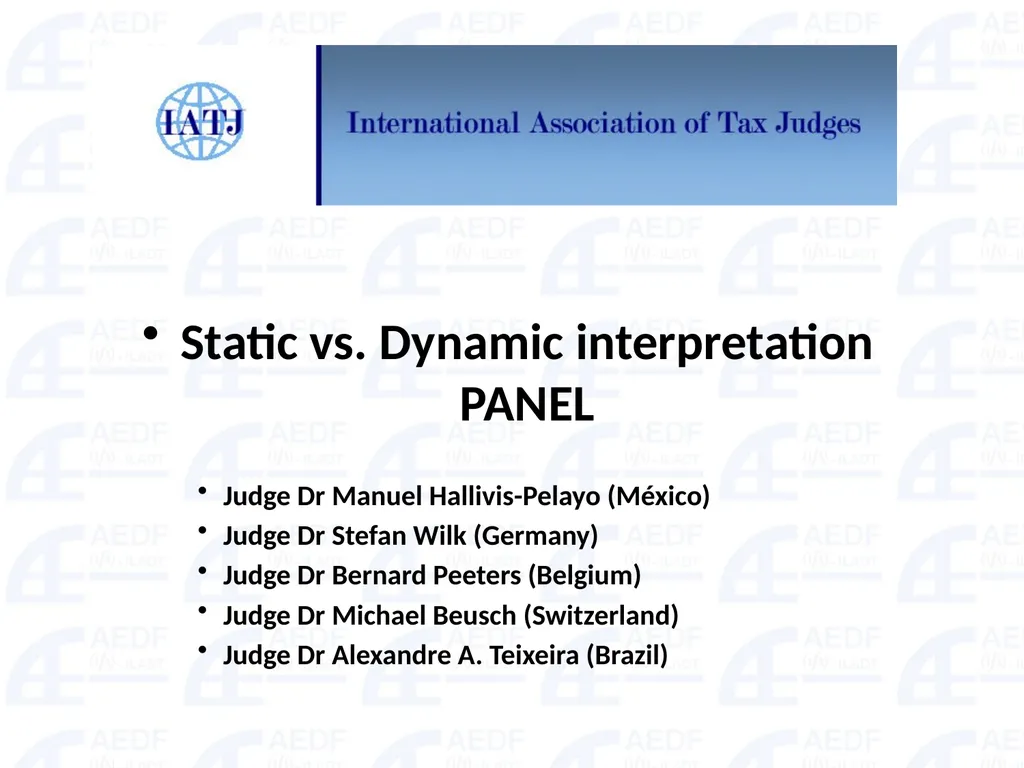
Static vs. Dynamic interpretation PANEL Judge Dr
Author: alexa-scheidler | Published: 2025-06-23
Description: Static vs. Dynamic interpretation PANEL Judge Dr Manuel Hallivis-Pelayo (México) Judge Dr Stefan Wilk (Germany) Judge Dr Bernard Peeters (Belgium) Judge Dr Michael Beusch (Switzerland) Judge Dr Alexandre A. Teixeira (Brazil) Introduction.
Download Presentation
Download the PPT/PDF: Download
Transcript:
Loading transcript�